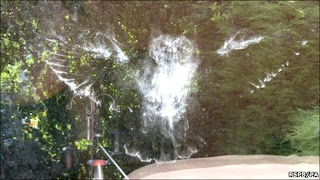Samhain, or Sowhaim or Hallow's Eve or Day of the Dead of the creepy curtain that is October into November where the Spirits rise....Boo!
Gaelic harvest festival held on October 31–November 1. It was linked to festivals held around the same time in other Celtic cultures, and was popularised as the "Celtic New Year" from the late 19th century, following Sir John Rhys and Sir James Frazer.[2] The date of Samhain was associated with the Catholic All Saints' Day (and later All Souls' Day)
from at least the 8th century, and both the secular Gaelic and the
Catholic liturgical festival have influenced the secular customs now
connected with Halloween.[3]
The medieval Goidelic festival of Samhain marked the end of the harvest,
the end of the "lighter half" of the year and beginning of the "darker
half". It was celebrated over the course of several days and had some
elements of a Festival of the Dead.
Bonfires
played a large part in the festivities. People and their livestock
would often walk between two bonfires as a cleansing ritual, and the
bones of slaughtered livestock were cast into its flames.[4]

No comments:
Post a Comment